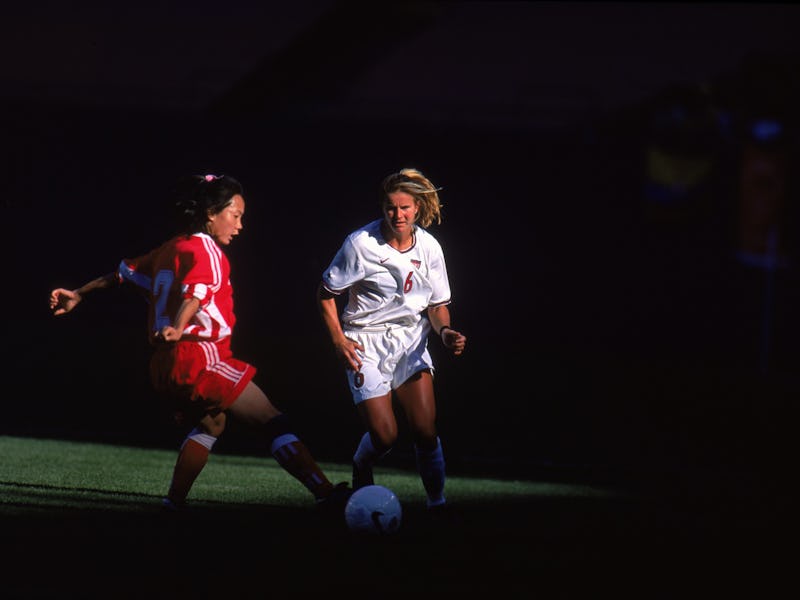Soccer Star Brandi Chastain Will Donate Her Brain for Concussion Research
Current research focuses on male football players, but women are also at risk.

When Brandi Chastain, hero of the 1999 Women’s World Cup, dies, her brain could save lives. Chronic traumatic encephalopathy, or C.T.E., is killing former athletes at alarming rates, and Chastain wants her brain to help scientists study the degenerative effects of concussions and head trauma in contact sports. The National Football League is plagued by concussion scandals, and the longterm effects of the sport’s brutality continue to take lives when players develop C.T.E., a degenerative brain disease with a wide range of neurological symptoms, including an increased suicide risk.
Much of the current research is focused on male American football players, like Scott Duerson, a former NFL defensive back who shot himself in the chest, taking his life but preserving his brain for future study. Scientists studying C.T.E. at the Concussion Legacy Foundation have a bank of 307 donated brains from former athletes and patients with significant concussion risk, but only seven of them are from female athletes or patients.
“I’ve been involved in sports for a long time, only up until recently, have people been talking about concussions, and then concussions specifically related to soccer,” Chastain told CBS News. “It’s been mostly a football problem or a football issue. But it’s not.”
Chastain has said that she can recall at least “half a dozen times” when she experienced significant head trauma or a concussion during her soccer career. She told The New York Times that it was doubly important for her to donate her brain to help other female athletes, who rarely get the same oversight or scrutiny that their male counterparts do.
“The women who play at the professional level and the elite level, even these young kids, they give as much as the guys,” Chastain said. “I open the newspaper and read about someone from the Yankees making $325 million over 10 years. It’s mind-boggling. But the women and the girls that I represent, they are doing it for nothing. We do it because we love it. It doesn’t mean our involvement and what we put into it isn’t the same. And there’s nobody saying, ‘What’s it doing to them?’”
In 1999, with the Women’s World Cup on the line, Chastain stepped up for the final shot in a penalty shootout in front of 90,000 screaming fans in Pasadena’s Rose Bowl stadium. She hit the ball hard, toward the right side of the net, and the Chinese goalkeeper dived a split second too late. The stadium erupted, and Chastain ripped off her white U.S. jersey, leaping in the air before her teammates mobbed her.
There's nothing more American than beating China at a competition and shouting about it.
Chastain became an American hero, instantly changing the perception of women’s soccer in the United States and elevating the sport to unprecedented heights. She’s an icon for many young women, but said she wanted more of a legacy than just glory on the field.
“If there’s any information to be gleaned off the study of someone like myself, who has played soccer for 40 years, it feels like my responsibility — but not in a burdensome way,” Chastain told The Times. “People talk about what the ’99 group did for women’s soccer. They say, ‘Oh, you left a legacy for the next generation.’ This would be a more substantial legacy — something that could protect and save some kids, and to enhance and lift up soccer in a way that it hasn’t before. That was the impetus for saying yes. If we can learn something, we should. And I won’t need it.”